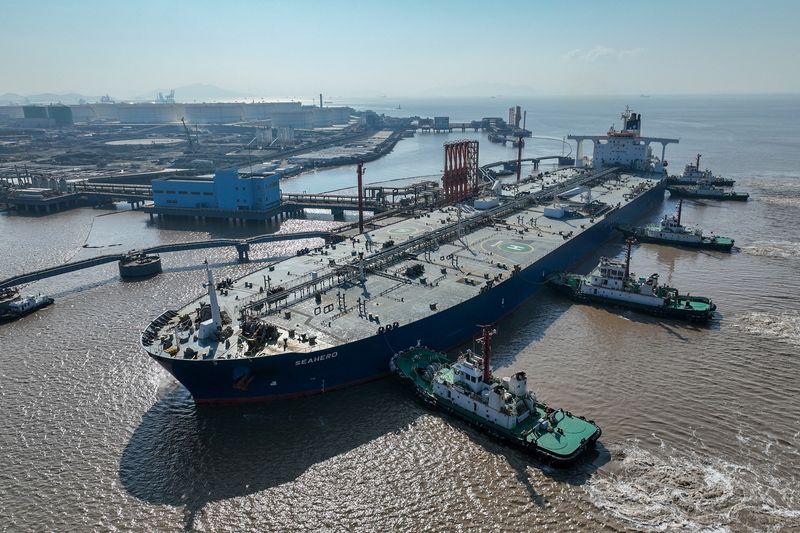By Erwin Seba
(Reuters) - Oil futures climbed on Thursday after the U.S. Energy Information Administration (EIA) reported a draw on crude oil and data showing a cooling jobs market that stoked hopes the Federal Reserve could cut interest rates soon.
Brent crude futures settled at $85.71 a barrel, up 64 cents or 0.75%. The session high of $85.89 was the highest since May 1.
U.S. West Texas Intermediate (WTI) futures for July, which expire on Thursday, finished at $82.17 a barrel, up 60 cents, or 0.74%.
"The market is definitely getting a bounce," said Phil Flynn, analyst with Price Futures Group.
Crude inventories fell by 2.5 million barrels in the week ending June 14 to 457.1 million barrels, the EIA said, compared with analysts' expectations in a Reuters poll for a 2.2 million-barrel draw.
Stocks at the Cushing, Oklahoma, delivery hub for U.S. crude futures rose by 307,000 barrels, the EIA said.
There was no WTI settlement on Wednesday because of a U.S. public holiday, which kept trading largely subdued. The more active August contract was up 60 cents at $81.31.
The number of Americans filing new claims for unemployment benefits fell last week.
Labor market momentum has ebbed in tandem with the overall economy as the Fed has tightened policy to fight inflation. With that pressure subsiding, a rate cut this year remains on the table.
Lower rates could support oil prices, which have been dragged this year by lackluster global demand. A U.S. rate cut would make borrowing cheaper in the world's largest economy, galvanizing the appetite for oil as production picks up.
Oil prices are also likely to remain supported by a growing geopolitical risk premium driven by conflict in the Middle East, said ActivTrades analyst Ricardo Evangelista.
Israeli forces pounded areas in the central Gaza Strip overnight, while tanks deepened their advance into Rafah in the south.
However, expectations of an inventories build appear to be overshadowing fears of escalating geopolitical stress for now, said Priyanka Sachdeva, senior market analyst at Phillip Nova.

A summer uptick in oil demand, refinery runs and ongoing weather risks added to extended production cuts by the OPEC+ producer group mean that "oil balances should tighten and inventories should begin to draw during the summer months", JPMorgan (NYSE:JPM) commodities analysts wrote.
The Bank of England kept its main interest rate unchanged at a 16-year high of 5.25% ahead of Britain's national election on July 4. (This story has been corrected to change the crude inventory data to 2.5 million barrels, not 5.9 million and expectations to 2.2 million, not 1.9 million, in paragraph 5, and to say that the stocks rose by 307,000 barrels, not fell by 1.3 million barrels, in paragraph 6)